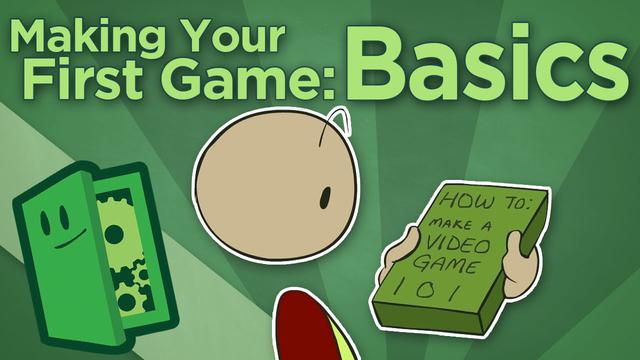Every game project, no matter the scale, needs careful planning. One of the main reasons for this is because ideas change over time.
Jumping right into a game without a plan often deviates from its original idea. Having a plan helps avoid deviation while at the same time helps transmit your ideas to your team better.
Almost every game enthusiast and aspiring artist at some point wants to turn their own ideas into a game. Making games isn’t necessarily hard, but it’s a rather tedious process.
Build out a game design document
Game design documents are used in today's blockbuster FPS games.
Over the years, I’ve seen a lot of people asking around online for a team to create games. However, when asked about their game, all too often they’ll give a vague representation of their game. Simply because it’s all in their head.
A great place to start is getting all of that out of your head. Regardless of which game engine or 3D authoring applications you might use, it’s always best to plan things out before starting such a project and before reaching for help online or even before hiring artists and developers.
If the people you ask for help can’t see your vision right at the get go, they’ll quickly lose interest. Even if you plan to make a game on your own, things can get out of control if you don’t have a solid plan to follow.
Your plans will serve as a foundation for your idea as well as a guide to follow throughout the development. In the game industry, we call this a game design document (GDD).
In a typical GDD, you’ll elaborate anything related to the game in question. Everything from your game mechanics, specify which type of game it will be, the story of the game (if there is one), initial artwork, a brief, etc.
Get your entire idea out of your head and put it into a GDD. But don’t stop there. Continue to add to the GDD and use it as a logbook for your project.
Tips for getting started with your game design document
Keep adding to the GDD as you're making your game.
Sometimes starting can be the most difficult part, so here’s some starter questions to help you start building out your own GDD. You can download a printable version of the questions here.
BrainstormAlways have space in your GDD for brainstorming. Nothing is a bad idea in a brainstorm, so get it all out of your head and dump it in the GDD!
DesignWhat’s the basic interactive design?
What’s the planned interface (UI and controls)?
What’s the planned perspective (1st person vs. 3rd person)?
What type of interactive structure will there be (chapters, great middle sections, levels)?
What’s the genre of the game (FPS, adventure, RPG, etc...)?
Is it single player or multiplayer?
How difficult is the game?

How long will it take the average player to complete?Story & scenario (if any)
What’s a synopsis of the overall story?
What’s the full story (going more in-depth)?
What sort of scenarios are in the game? Are there cinematics and cutscenes? Where in the story do they fit?Gameplay
Describe the gameplay
Describe what a player would experience in a typical playing sessions (to give a kinetic sense of the gameplay):
Describe each mission or level of the game (as applicable):
Describe the preliminary maps of each level or missions of the game (as applicable):
Describe all the characters, secondary characters and monsters or bosses of the game:
Describe the sound design in as much detail as you can (music, voices & sound effects):Marketing
Does this game target one core audience or multiple audiences?
Who’s the target audience and what are their expectations of a game like this?
Is this a game for hardcore gamers or more “mass market”?
What’s the key competition for this game?
How does this game compare to its competition?
What does this game offer that the competition doesn’t?
What does the competition offer that this game doesn’t?
Start simple
Don't try making the world's next best MMO for your first game.
When you’re just starting out in the game design field or want to tackle a project on your own, it’s a good idea to start with something simple and small. Even the simplest game can be successful if they are fun to play.
I’ve seen a lot of projects go downhill because the idea was too big for the person or small team.
For example, I’ll often see something like an MMORPG being started by game enthusiasts who are new to making games. Those games are usually huge. Even the title, MMORPG (massively multiplayer online role-playing game) eludes to the scale. It’s not really something one person or even a small team would want to tackle.
Of course if you’ve got a great idea for an MMORPG, I’m not saying you should throw your idea away. Instead, dump it out into a GDD and put it aside for now. Come back to it once you’ve either gained some experience on smaller projects or, if you can get the funding, gathered a large enough team to build a big game like that.
A great idea can’t be a great game if you or your team doesn’t have a great idea of the amount of work it involves. It can also overwhelm your team, sapping their passion for working on the game. By creating a GDD at the beginning, you’ll get your game started off on the right path by giving everyone involved a better idea of how much work the actual game idea may take.
To learn more about creating game design documents, check out Creating a Game Concept and Design Document or Designing Mobile Games with a Game Design Document. Or, you can see how a game design document is used to help a game dev team throughout the entire pipeline in our Unity Mobile Game Development series.
